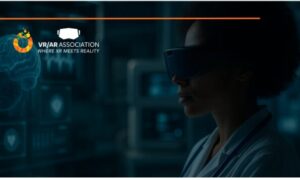Welcome to the future of healthcare, where patients are no longer just passive recipients of medical services, but active participants in their own well-being. In this blog post, we explore the transformative power of accessible and secure health information technology platforms in empowering patients like never before. Gone are the days when individuals had limited access to their medical records or struggled to communicate with healthcare providers effectively. Today, innovative solutions have emerged that put control back into the hands of patients while ensuring their sensitive data remains protected. Join us as we delve into this exciting world where technology becomes a catalyst for better patient outcomes, enhanced communication, and ultimately, a more empowered approach towards personal health management.
History of Health Information Technology
Health information technology (HIT) has come a long way since its inception in the early 1990s. Back then, HIT was primarily used to manage patient records and facilitate communication between healthcare providers and patients. However, over the past few years, HIT has evolved into a powerful tool that can be used to empower patients to take control of their health care.
One of the earliest examples of how HIT can be used to improve patient care was in 2007 when doctors at Brigham and Women’s Hospital in Boston began using an electronic medical record (EMR) system to track patients’ medications. The EMR system allowed doctors to see all of a patients’ prescriptions in one place and let them know when a patient missed a dose of medication.
Since 2007, there have been numerous other examples of how HIT has been used to improve patient care. For example, hospitals across the United States are now using videoconferencing tools to allow doctors and family members to stay connected with patients who are undergoing surgery or receiving treatment for cancer. Similarly, hospitals are also using digital dashboards to provide patients with real-time information about their health status.
Healthcare providers are increasingly recognizing the importance of using accessible and secure HIT platforms in order to empower their patients. By providing them with access to relevant information and tools, healthcare providers can help ensure that their patients are able to take control of their own health care decisions .
What is Health Information Technology?
Health information technology (HIT) is a rapidly growing field that is revolutionizing the way health care is delivered. HIT platforms allow providers to share patient data in a secure and centralized manner, facilitating seamless coordination of care. Patients can access their health records from any device or location, including the cloud, and make informed decisions about their health care.
There are a number of different types of HIT platforms available, each with its own advantages and disadvantages. One example of a popular HIT platform is electronic health record (EHR) software. EHRs are designed to capture all aspects of a patient’s health history, including medical records, prescription drug data, lab results, and more. They can also help doctors track patients’ progress over time and ensure that they are receiving the right treatments for their conditions.
However, EHRs have some limitations. For example, they are not always user-friendly or accessible on mobile devices. Additionally, many hospitals do not currently use EHRs in order to save money on costs associated with software licenses and hardware upgrades. In contrast, text message notification systems are widely used in the UK because they are inexpensive to set up and maintain compared to traditional computerized alerting systems like EHRs.
Another popular type of HIT platform is patient portal software. Patient portals allow patients to view their medical records online as well as receive notifications whenever new information related to their illness or treatment is released by their healthcare provider. Many hospitals now offer this type of service as an optional addition to their patient care package.
Finally, there is mobile health (MHL) technology. MHL platforms allow doctors to remotely diagnose and treat patients using mobile devices such as smartphones and tablets. This technology has the potential to improve the quality of healthcare services by allowing doctors to diagnose and treat patients more quickly and efficiently. However, MHL systems have not yet been adopted by all hospitals, and they are not always suitable for use by patients with medical conditions that require intensive care or surgery.
Types of Health Information Technology Platforms
Health information technology (HIT) platforms can be broadly classified into two types: on-premises and cloud-based. On-premises HIT platforms are typically installed on the organization’s own servers, while cloud-based HIT platforms are accessed through a web browser.
On-premises HIT platforms can be divided into three categories based on how the data is stored: centralized, distributed, or hybrid. Centralized on-premises HIT platforms store all of the patient data in a single location, while distributed on-premises HIT platforms distribute data across multiple locations. Hybrid on-premises HIT platforms combine elements of centralized and distributed systems.
Cloud-based HIT platforms offer several advantages over on-premises systems. First, cloud-based systems are accessible from any computer with an internet connection. Second, cloud-based systems do not require any installation or configuration work by patients or doctors. As data is stored in the cloud rather than on organization’s own servers, cloud-based HIT platforms are more scalable and efficient than on-premises systems.
There are several different types of cloud applications that can be used to build a health information technology platform: web applications (eg., Gmail), enterprise resource planning (ERP) applications (eg., Salesforce), mobile apps (eg., Uber), and social networking websites (eg., Facebook).
The most popular type of health information technology platform is electronic medical records (EMR) systems. EMR systems store patient data in a centralized location and allow doctors and nurses to access the data from a single location. EMR systems are becoming more popular as they offer several advantages over traditional paper medical records. First, EMR systems can be more accurate as they use electronic algorithms to track patients’ health information. Second, EMR systems can be more accessible as they are typically integrated with electronic health records (EHR) software. Third, EMR systems can be more secure as they use cryptography to protect patient data.
Another common type of health information technology platform is ambulatory care management (ACM) Systems. ACM Systems help hospitals and clinics manage patients’ appointments and treatments. ACM Systems can include features such as appointment scheduling, medication management, and fraud prevention.
How do Health Information Technology Platforms Work?
Health information technology platforms (HITPs) are computer systems that collect, organize, and make accessible medical records. HITPs can help patients access their health records from any device or location, and they can be accessed securely through passwords and digital certificates. HITPs also can identify patterns of care and improve patient outcomes by providing alerts about potential health risks.
HITPs are becoming increasingly popular in the United States because of their ability to improve patient care. A study by the Commonwealth Fund found that states with well-developed HITPs had lower rates of hospital readmissions for Medicare beneficiaries than states without HITPs. In addition, a study by The Economist found that HITP programs in England saved £2 billion ($3.6 billion) between 2013 and 2017 in terms of preventable health expenses.
There are several different types of HITP systems, including electronic health record (EHR) systems, population health management systems (PHMS), and clinical decision support systems (CDSS). EHRs are the most common type of HITP system, and they allow healthcare providers to electronically manage patients’ records. PHMSs allow healthcare providers to track the health status of large populations of patients, and CDSSs help doctors make better decisions about patient care.
HITP systems can be expensive to implement, but they are worth it because they can save patients money in the long run. A study by McKinsey & Company estimated that adopting an effective HITP system can save up to $1.5 billion per year in unnecessary healthcare costs.
Benefits of using Health Information Technology Platforms
Health Information Technology (HIT) platforms provide patients with easy access to their health information, enabling them to make informed decisions about their health and well-being. These platforms can also help hospitals and other healthcare providers more effectively manage patient care and improve efficiency.
One of the most important benefits of using HIT platforms is that they make it easier for patients to keep track of their medical history and current health status. This allows them to better understand their own health situation and make informed decisions about their treatment.
HIT platforms can also help healthcare providers find trends in patient data, which can help them better diagnose and treat illnesses. By understanding how a particular illness is affecting different groups of patients, healthcare providers can create more tailored care plans for each individual.
HIT platforms can help hospitals reduce costs by automating various administrative tasks. For example, hospitals can use HIT platforms to manage insurance claims or track inventory levels.
Drawbacks of using Health Information Technology Platforms
Health Information Technology Platforms can be powerful tools for patients and healthcare providers. However, there are some potential drawbacks to using these platforms. One potential drawback is that Health Information Technology Platforms can be expensive to use. Additionally, they may require a lot of time and effort to set up and maintain. Another potential drawback is that Health Information Technology Platforms can be vulnerable to cyberattacks.
Conclusion
I hope that this article has empowered you with the knowledge necessary to begin using accessible and secure health information technology platforms in your practice. As a healthcare provider, it is important that you provide your patients with the best possible care by making sure their health data is accessible and secure. By utilizing these types of platforms, you can ensure that all of your patients’ records are centralized and easily retrievable from any computer or mobile device. With these tools at your disposal, ensuring patient safety and improving quality of care will become much easier. Thank you for reading.



































